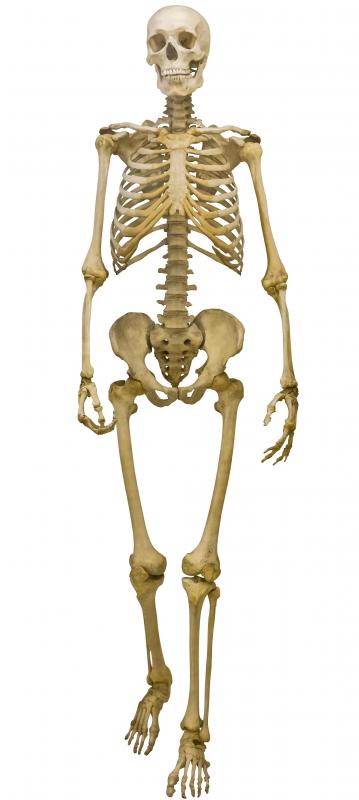At TheHealthBoard, we're committed to delivering accurate, trustworthy information. Our expert-authored content is rigorously fact-checked and sourced from credible authorities. Discover how we uphold the highest standards in providing you with reliable knowledge.
What is the Haversian System?
A Haversian system, also known as an osteon, is a series of concentric circles, called lamellae, found in the compact bone of humans. Down the middle of each of these systems is a hollow tube that holds a blood vessel. Each compact bone in the human body has many Haversian systems that line up next to each other, creating a dense structure.
Within the lemellae of each Haversian system are a series of spaces called lacunae. The lacunae hold the osteocytes, or bone cells. These osteocytes, along with the collagen and calcium phosphate that make up the matrix of the lamellae, ensure that compact bone is very strong. There are also osteoblasts in the area that become osteocytes.

The blood vessel that runs down the middle of a Haversian system provides nutrients to the living bone tissue. Nerves and lymph vessels are also found in Haversian canals. These accessory tissues help with immune response in the bones and also pick up signals from various stimuli.
Compact bone is most often found in the shafts of the long bones of the human skeleton. The epiphyses, found at the ends of long bones, are made of cancellous, or spongy, bone. Haversian systems are not found within the cancellous bone, which is porous, less dense, and more fragile than compact bone.

Even though this system was first observed by Anton von Leeuwenhoek in the late 1600s, it was named after the English physician, Clopton Havers. Havers published and lectured about the microscopic makeup of the canals he had seen in the bone. His theory about the function of the canals was that they provided the oils necessary to harden the bone around it.

The exact function of a Haversian system is not known, and they are not present in many vertebrate animals. Some theories as to their function are that they repair damaged bone tissue, reduce stress on the compact bone, and give muscle a place to anchor.
Necrotic, or dying, bone tissue leaves empty lacunae in the Haversian system, and it is believed that the Haversian canals absorb these dead or dying tissues so they can be replaced by new osteocytes. These areas are known as resorption spaces and require the help of blood vessels that bring nutrients to the surrounding tissues.
AS FEATURED ON:
AS FEATURED ON:














Discuss this Article
Post your comments